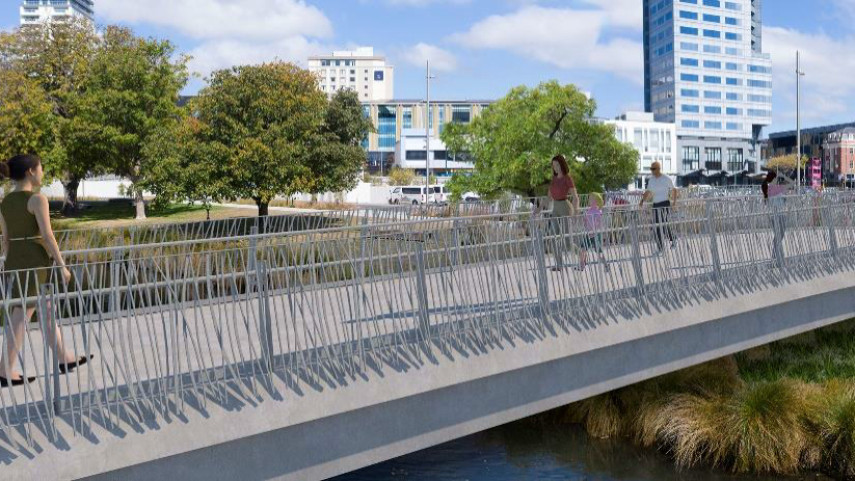
Work begins on new pedestrian bridge over Avon

Share this story
Construction of a new pedestrian bridge connecting the City Promenade to Cambridge Terrace has begun.
The bridge is costing just over $3 million to build and is being constructed by Fulton Hogan, who was awarded the contract by Crown rebuild agency Ōtākaro Limited.
The bridge is being constructed out of concrete as it requires less maintenance than a steel structure, which is susceptible to corrosion.
Ōtākaro Chief Executive John Bridgman says it is great to be getting physical work started so soon after the move to Alert Level 3.
“Infrastructure projects are going to be an important part of our economic recovery. Fulton Hogan will have around five to eight people working at the site for much of the year and money will also be flowing through to its suppliers.
“The City Promenade is increasingly being used by cyclists and pedestrians for commuting and we want to see more of that. The 32-metre-long, 3.5-metre-wide bridge sits on a naturally desirable crossing point along the Promenade so it will make the journey easier for people heading to or from the north of the city or the recently announced Catholic Church Precinct,'' Mr Bridgman says.
Design elements that incorporate local ecology and enhance the existing artwork Taurapa feature in the design of the bridge.
Matapopore Chairperson Aroha Reriti-Crofts says the bridge balustrades will feature a harakeke design.
“The linking of harakeke blades through weaving is a symbol of strength, which is important for a bridge. The flow and curve of the leaves also reference the linking of arms as a way to cross rivers.
“The flowing river pattern etched on the bridge deck represents the concept of Ki uta ki tai (from the mountains to the sea), which acknowledges the important connections between people and communities, people and the land, and people and water.”
Around 1400 native plants and trees will be added to the riverbanks surrounding the bridge to help integrate it into the landscape.
Work on the pedestrian bridge is expected to be completed early next year, subject to weather and river conditions and any increase in COVID-19 restrictions.
